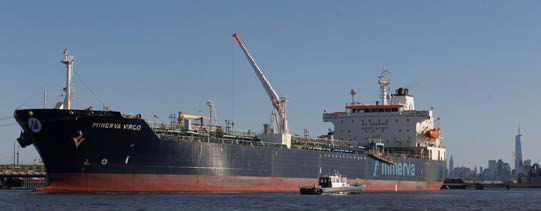Port & Pilot Commission Summary
The Port of New York and New Jersey is the largest port on the Eastern Seaboard and the 2nd largest in the United States by volume. The ever-increasing size, capacity, and tonnage of ships has highlighted the need for a strong and robust pilotage system. Ultra-Large container vessels are now capable of carrying 18,000 containers. They have drafts of nearly 50 feet, can exceed 1,200 feet in length and over 18 stories high, leaving no margin for error in close quarters pilotage. More than 95 percent of ships entering, departing, and transiting through the Port of New York are foreign flagged. The State pilot must take all these factors and more into account and safely navigate these ships in all weather conditions ranging from calm to heavy sea conditions, ice, poor visibility, strong currents and gusting winds. The pilots are compulsory as mandated by the New York State Navigation Law. Without these highly trained and skilled pilots, commerce in the Port of New York and New Jersey and other New York State pilotage waters would likely grind to a halt.
The tradition of taking aboard a pilot to guide ocean going vessels to and from sea dates back more than a millennia. Pilots provide the unrivaled local knowledge necessary to safely navigate oceangoing ships operating within New York State waters, the waters of Connecticut and New Jersey, and boundary waters of the Long Island Sound.
Congress granted States the authority to manage pilotage of vessels. Federal Law and Regulation (46USC 8501(A)) provides that “pilots in the bays, rivers, harbors and ports of the United States shall be regulated only in conformity with the laws of the States.”
The Board was created by the New York State Legislature, Chapter 467, Laws of 1853, as amended, to implement the competitive selection, training, licensing, and regulation of State pilots. The Board’s responsibilities have expanded to include participation in the selection of apprentices and pilots-in-training; administer state pilot examinations for an original license and any extension of pilotage routes; annual license renewals; marine accident investigation and disciplinary actions; safety of navigation issues; protection of the environment; and security. To carry out these responsibilities, the Board holds weekly meetings for the purpose of maintaining close oversight of the State pilotage system, its operations, and pilots.
The Board issues several types of legislatively authorized State pilot licenses, each covering a separate portion of New York State navigable waters, including the Port of New York and New Jersey and Hell Gate pilots, Hudson River pilots, and Long Island Sound/Block Island Sound pilots. Each New York State pilot license is renewed annually. Pilots appear personally before the Board where training and work performance records are reviewed in conjunction with the state pilot providing his or her annual vision and medical exam results. The Board routinely interviews the pilots and apprentices and inquires on safety, security and educational matters. The Board provides grants for advanced pilot education and training. Board members also participate in seminars and conferences on pilotage and navigational safety with maritime industry, state and federal agency representatives.
The Board welcomes inquiries regarding the State pilotage system. Contact the board ».
